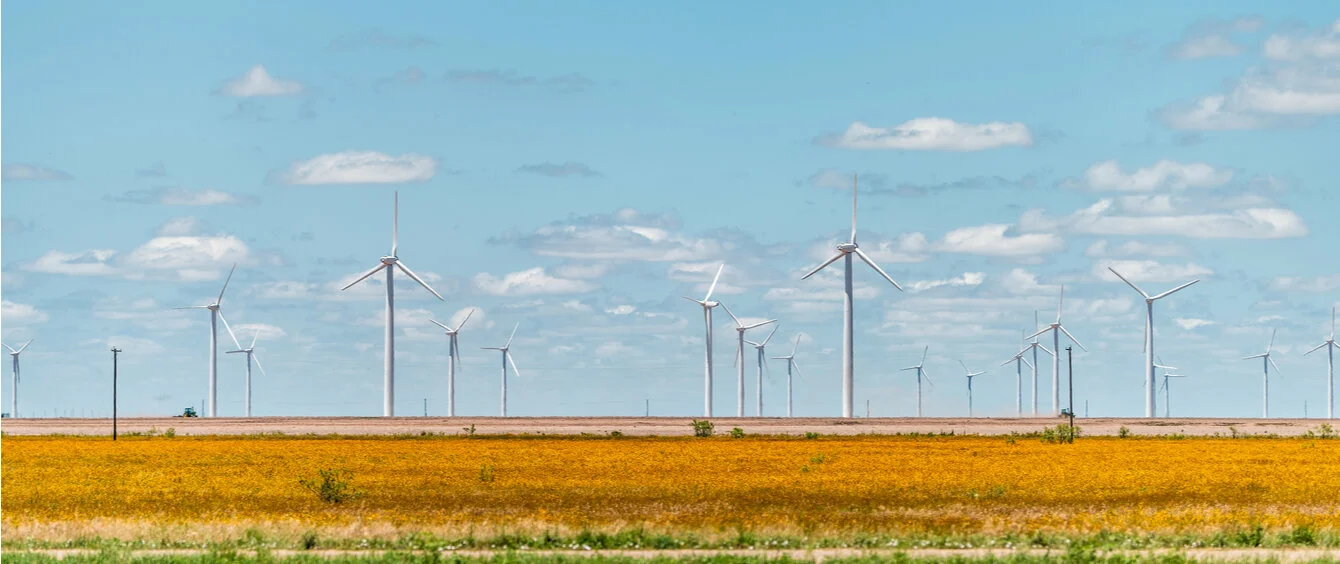Huge oil and gas fields – the Lone Star State is known for its fossil fuels. However, the USA’s second-largest state, located in the south of the country, is rarely mentioned in the same breath as renewables – or at least it hasn’t been until now. In recent years, Texas has in fact become the country’s largest wind power producer by far, accountable for around a quarter of the wind energy generated in the US.
The Lone Star State has long been presided over by Republicans, who have been known to take a critical view of solar and wind energy. A comprehensive article in USA Today, one of the largest daily newspapers in the States, has looked into this alleged contradiction and has examined the wind power boom in more detail. The article presents some of the conditions needed to ensure renewable energy sources become economically competitive.
Lots of wind and lots of power lines
Unsurprisingly, the most important factor is an abundance of wind, an area where Texas comes up trumps. The state is located in the wind belt, a region with excellent wind resources. The wind belt runs directly through the middle of the country to Canada and crosses states such as Oklahoma, Kansas and Nebraska in addition to Texas. Other states in the region may be increasingly turning to wind energy, but Texas is undoubtedly the pioneer, due to its more lenient building regulations, its control systems that promote the construction of wind turbines, and its many power lines.
As early as 2005, Texas – under the watchful eye of Republican Governor Rick Perry – decided to build around 750 kilometres of power lines to transmit electricity from the windy northwest to the urbanised areas in the east of the state. “Texas essentially owes its success to the expansion of local power lines,” explains Sarah Mills, an engineer and development expert at the University of Michigan, in USA Today. In addition, the state has its own transmission system called ERCOT. Since the system does not cross state borders and is controlled by Texas itself, the infrastructure can be expanded more quickly without needing permits from Washington.
Lots of space and few restrictions
Another key ingredient is space – which Texas has in spades. The windy regions to the north and west, in particular, are rural areas with fewer planning restrictions. In addition, according to USA Today, the state largely subscribes to the notion that landowners are free to decide what happens on their own property.
This explains why wind farms are being built en masse in Texas. The daily newspaper cites the Roscoe wind farm operated by RWE in West Texas as an example. A total of 627 wind turbines with a combined output of 782 megawatts cover an area of around 340 square kilometres, which is more than the five times the size of Manhattan Island. At the time of commissioning back in 2009, Roscoe, which is able to supply around 230,000 homes with electricity, was the largest onshore wind farm in the world.
The park is operated by RWE and consists of 627 wind turbines with a total output of 782 megawatts. It has an area of 340 square kilometers and is therefore larger than the five Manhattan Islands combined.
Jobs galore and high approval ratings
Despite the scale of the undertaking and the 14,720 wind turbines dotted throughout Texas, studies show that locals don’t have an issue with the turbines. On the contrary, the wind power sector has brought many jobs to the state, where more than 25,000 Texans work in the industry.
For those rural areas where the population is suffering from the decline of agriculture and industry, wind energy has come as a blessing, says Susan Sloan, Vice President of State Affairs at the American Wind Energy Association in Washington, D.C, in USA Today. “Farmers and ranchers generate income using their land, municipalities gain a greater tax base and cities are able to access a cheap, stable source of energy.”
